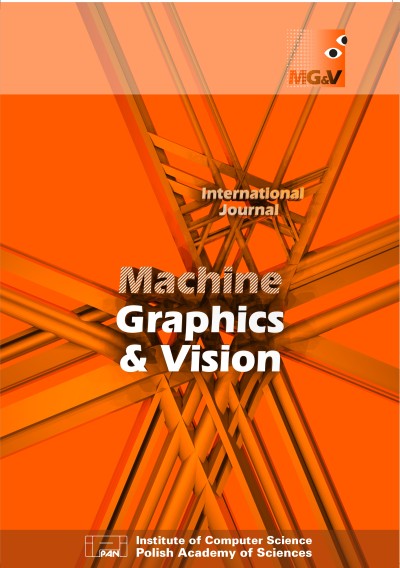Main Article Content
Article Details
M. A. Fischler and R. C. Bolles: Random sample consensus: a paradigm for model fitting with applications to image analysis and automated cartography. Commun. ACM, 24(6), 381-395, 1981. (Crossref)
B. K. Horn and B. G. Schunck: Determining optical flow. Artificial Intelligence, vol. 17, Issues 1-3, 185-203, 1981. (Crossref)
J. Helman and L. Hesselink: Visualizing vector field topology in fluid flows. IEEE Computer Graphics and Applications, 11(3), 36-46, 1991. (Crossref)
D. Helbing and P. Molnar. Social force model for pedestrian dynamics. Physical Review E, 51: 4282, 1995. (Crossref)
James Kennedy and Eberhart Russell: Particle swarm optimization. Neural Networks. Proceedings. IEEE International Conference on. Vol. 4, 1995.
D. N. Kenwright: Automatic Detection of open and closed separation and attachment lines. Proc. IEEE Visualization’98, 151-158, 1998.
D. N. Kenwright, C. Henze and C. Levit: Feature extraction of separation and attachment lines. IEEE Transactions on Visualization and Computer Graphics, 5(2), 135-144, 1999. (Crossref)
G. Scheuermann, B. Hamann, K. I. Joy, et al: Visualizing local vector field topology. Journal of Electronic Imaging, 9(4), 356-367, 2000. (Crossref)
X. Tricoche, G. Scheuermann and H. Hagen: A topology simplification method for 2d vector fields. In Visualization 2000. Proceedings, 359-366, 2000.
T. Wischgoll and G. Scheuermann: Detection and visualization of closed stream lines in planar flows. IEEE Transactions on Visualization and Computer Graphics, 7(2): 165-172, 2001. (Crossref)
R. L. Hughes: A continuum theory for the flow of pedestrians. Transportation Research Part B: Methodologica, 36(6), 507-535, 2002. (Crossref)
Xiaoshan Pan, Charles S. Han, Ken Dauber and Kincho H. Law: Human and social behavior in computational modeling and analysis of egress. Automation in Construction, 15(4), 448-461, 2006. (Crossref)
S. Ali and M. Shah: A lagrangian particle dynamics approach for crowd flow segmentation and stability analysis. Computer Vision and Pattern Recognition, CVPR’07, IEEE Conference on, 1-6, 2007. (Crossref)
A. Basharat, A. Gritai and M. Shah: Learning object motion patterns for anomaly detection and improved object detection. In Computer Vision and Pattern Recognition. CVPR 2008. IEEE Conference on, 1-8, 2008. (Crossref)
J. Kim and K. Grauman: Observe locally, infer globally: A space-time MRF for detecting abnormal activities with incremental updates. Computer Vision and Pattern Recognition, IEEE Computer Society Conference on, 2921-2928, 2009. (Crossref)
R. Mehran, A. Oyama and M. Shah: Abnormal crowd behavior detection using social force model. In Proceedings of IEEE Conference on Computer Vision and Pattern Recognition, 935-942, 2009. (Crossref)
C. Garate, P. Bilinsky. and F. Brernond: Crowd event recognition using HOG tracker. In Proceeding of the 12th IEEE International Workshop on Performance Evaluation of Tracking and Surveillance(PETS-Winter). Snowbird, USA, 1-6, 2009. (Crossref)
V. Mahadevan, W. Li, V. Bhalodia and N. Vasconcelos: Anomaly detection in crowded scenes. In Proceedings of IEEE Conference on Computer Vision and Pattern Recognition, 1975-1981, 2010. (Crossref)





